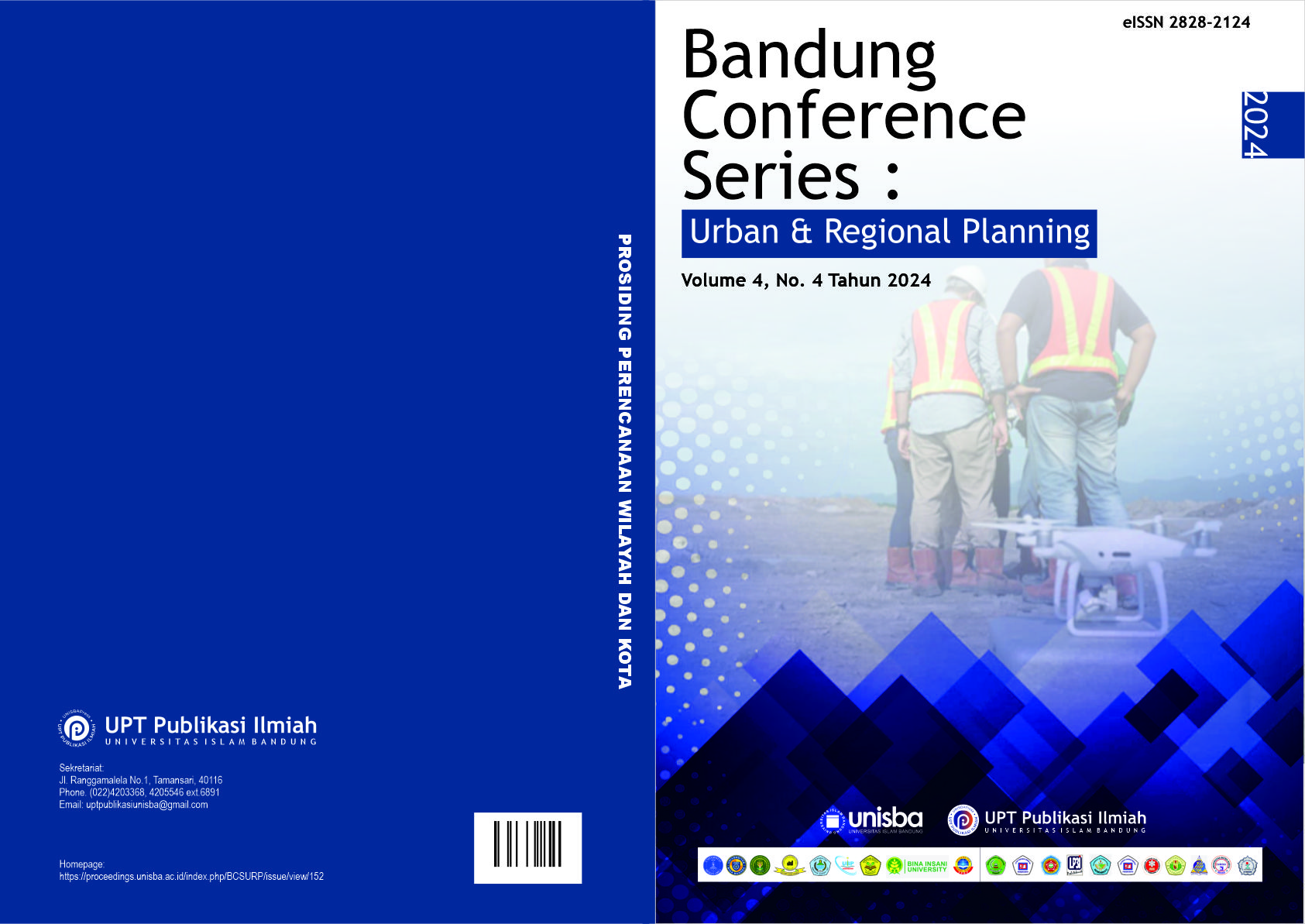Neuroscience Approach to Commuter Behavior in Bandung Urban Area
Abstract
Behavior is an individual's reaction to the environtment. Literautre studies show that commuter traffic behavior correlates with their mental health. Bandung has become an economic growth center for surrounding areas, resulting in unavoidable commuter movements to and from Bandung. This study aims to identify the brainwave activity of commuters and connect it to their mental health. The research approach is conducted using neuroscience through brainwave measurements using EEG (electroencephalogram). This EEG measurement was performed on 2 randomly selected commuter respondent out of 30. The selected respondents had different origin characteristics. The number of resondents involved had to consider medical consent due to the use of EEG devices commonly used for human health examinations.
References
Aji, R. R., Faniza, V., & Arisyanto, R. A. (2023). Dampak Covid-19 terhadap aktivitas pedagang yang melayani wisatawan di Kota Bandung. Region: Jurnal Pembangunan Wilayah Dan Perencanaan Partisipatif, 18(1), 281–294. https://doi.org/10.20961/region.v18i1.57548
Beirão, G., & Sarsfield Cabral, J. A. (2007). Understanding attitudes towards public transport and private car: A qualitative study. Transport Policy, 14(6), 478–489. https://doi.org/10.1016/j.tranpol.2007.04.009
Dwight A. Hennessy, & David L. Wiesenthal. (1999). Traffic Congestion, Driver Stress, and Driver Aggression Hennessy 1999. Aggressive Behaviour, 25(June 1998), 409–423.
Engelen, T., de Graaf, T. A., Sack, A. T., & de Gelder, B. (2015). A causal role for inferior parietal lobule in emotion body perception. Cortex, 73, 195–202. https://doi.org/10.1016/j.cortex.2015.08.013
Harmony, T. (2013). The functional significance of delta oscillations in cognitive processing. Frontiers in Integrative Neuroscience, 7(DEC), 1–10. https://doi.org/10.3389/fnint.2013.00083
Humphreys, D. K., Goodman, A., & Ogilvie, D. (2013). Associations between active commuting and physical and mental wellbeing. Preventive Medicine, 57(2), 135–139. https://doi.org/10.1016/j.ypmed.2013.04.008
Hyafil, A., & Koechlin, E. (2016). A neurocomputational model of human frontopolar cortex function. BioRxiv. https://doi.org/10.1101/037150
Lyznicki, J. M., Doege, T. C., Davis, R. M., Williams, M. A., Riggs, J. A., Heights, H., Douglas Skelton, N. ; W., Slanetz, P. J., & Young, D. C. (1998). Sleepiness, Driving, and Motor Vehicle Crashes-Lyznicki et al. Jama, 279(23), 1908–1913. http://jama.jamanetwork.com/
Mailik, A. S., & Amin, H. U. (2017). Designing Eeg Experiments for Studying the Brain. Academic Press.
Martin, A., Goryakin, Y., & Suhrcke, M. (2014). Does active commuting improve psychological wellbeing? Longitudinal evidence from eighteen waves of the British Household Panel Survey. Preventive Medicine, 69, 296–303. https://doi.org/10.1016/j.ypmed.2014.08.023
Orsini, F., Giusti, G., Zarantonello, L., Costa, R., Montagnese, S., & Rossi, R. (2024). Corrigendum to “Driving fatigue increases after the spring transition to daylight saving time in young male drivers: A pilot study” [Transport. Res. Part F: Traffic Psychol. Behav. 99 (2023) 83–97, (S1369847823002140), (10.1016/j.trf.2023.10.014)]. Transportation Research Part F: Traffic Psychology and Behaviour, xxxx. https://doi.org/10.1016/j.trf.2024.03.016
Roberts, J., Hodgson, R., & Dolan, P. (2011). “It’s driving her mad”: Gender differences in the effects of commuting on psychological health. Journal of Health Economics, 30(5), 1064–1076. https://doi.org/10.1016/j.jhealeco.2011.07.006
Saelens, B. E., & Handy, S. L. (2008). Built Environment Correlates of Walking: A Review. Medicine & Science in Sports & Exercise, 40(206). https://doi.org/10.1249/MSS.0b013e31817c67a4.Built
Singleton, P. A. (2019). Walking (and cycling) to well-being: Modal and other determinants of subjective well-being during the commute. Travel Behaviour and Society, 16(February), 249–261. https://doi.org/10.1016/j.tbs.2018.02.005
Sivasubramaniyam, R. D., Sargisson, R. J., & Charlton, S. G. (2020). Satisfaction from satisficing: Understanding commuters’ satisficing tendencies. Transportation Research Interdisciplinary Perspectives, 6. https://doi.org/10.1016/j.trip.2020.100158
Styliadis, C., Ioannides, A. A., Bamidis, P. D., & Papadelis, C. (2018). Mapping the Spatiotemporal Evolution of Emotional Processing: An MEG Study Across Arousal and Valence Dimensions. Frontiers in Human Neuroscience, 12(August), 1–17. https://doi.org/10.3389/fnhum.2018.00322
Tajalli, M., & Hajbabaie, A. (2017). On the relationships between commuting mode choice and public health. Journal of Transport and Health, 4, 267–277. https://doi.org/10.1016/j.jth.2016.12.007
van den Berg, M., Wendel-Vos, W., van Poppel, M., Kemper, H., van Mechelen, W., & Maas, J. (2015). Health benefits of green spaces in the living environment: A systematic review of epidemiological studies. Urban Forestry and Urban Greening, 14(4), 806–816. https://doi.org/10.1016/j.ufug.2015.07.008
Yang, G., Deng, N., Liu, Y., Gu, Y., & Yao, X. (2020). Evaluation of Glymphatic System Using Diffusion MR Technique in T2DM Cases. Frontiers in Human Neuroscience, 14(January), 616400. https://doi.org/10.3389/fnhum.2020.00300












